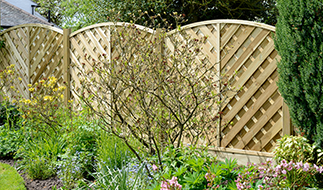How to Protect Gates During Cold Weather
- Gates
- Railings
- Fencing
- Accessories
& Fitting- Sheds
& Storage- Garden Structures
- Design
& StyleMetal Gates & Railings- Info
& Help2023-11-27
As the cold weather sets in, it's important to take steps to protect your garden gates from damage. Gates, fences and railings can all be affected by the elements, but there are steps you can take to ensure that you provide a little more protection.
Cold temperatures can wreak havoc on metal and wooden gates. Prolonged exposure to frost, snow, ice and bitter winds leads to corrosion, warping and splitting. If left unchecked, you may end up having to replace the gate altogether come springtime. Prevention is most certainly better than cure when it comes to combating the effects of winter weather.

Cleaning and Sealing
The first line of defence is to thoroughly clean your gates before winter hits. Give wooden gates a sweep to remove dirt, debris and leaves which can trap moisture. Use a wire brush to scrub off any loose paint or rust from metal gates. Once clean and dry, seal up any cracks or holes in wooden gates with an appropriate waterproof filler. Apply a weatherproof paint or wood preserver to protect the timber from moisture damage. Similarly, treat metal gates with a corrosion-resistant primer and topcoat paint formulated for use on exterior metal fixtures.

Insulate Hinges
Gate hinges are prone to seizing up in freezing temperatures when moisture works its way into the metal components. To prevent this, dismantle the gates towards the end of autumn and apply a Teflon-based lubricant to the hinges. Reassemble them with weatherproof insulation pads placed between each hinge knuckle. This prevents ice from forming whilst enabling the gate to continue swinging freely.

Install Gate Closers
Strong winds are common with winter weather fronts. These can catch an open gate and repeatedly slam it back against fence posts and walls. The impact can twist and buckle the gate frame. Installing an automatic gate closer regulates the speed at which the gates can blow around, protecting them from damage. Hydraulic models provide the greatest control of closing speed. Opt for closers suited for same width of your gates.

Erect Wind Barriers
Provide additional protection by putting up wind barrier panels on any walls, fences or hedges adjacent to the gates. These deflect the worst of the winds, preventing excessive blowing, vibrating and banging in stormy weather. Clear acrylic barriers maintain visibility whilst remaining virtually indestructible against gales. Bolt the panels securely to supporting posts fixed into the ground for maximum stability.

Check Weekly
Once you’ve winterised your gates, get into the habit of visually inspecting them at least once a week during the colder months. Check for early signs of paint blistering or cracking wood. Spotting and treating minor issues promptly reduces the likelihood of major deterioration occurring down the line. Set calendar reminders on your phone to prompt your weekly gate checks.
As can be seen, there is no full plan or procedure that will ensure your gates stay 100% in the same condition as you brought them. Wear and tear are inevitable… but if you take the steps as outlined above, you can certainly minimize this process. If you’re interested in a new gate, then here at Garden Gates Direct, we have a wide selection of beautiful metal and wooden gates to enhance your property. If you have any questions about our product range, please don’t hesitate to contact our friendly team.
- Railings



